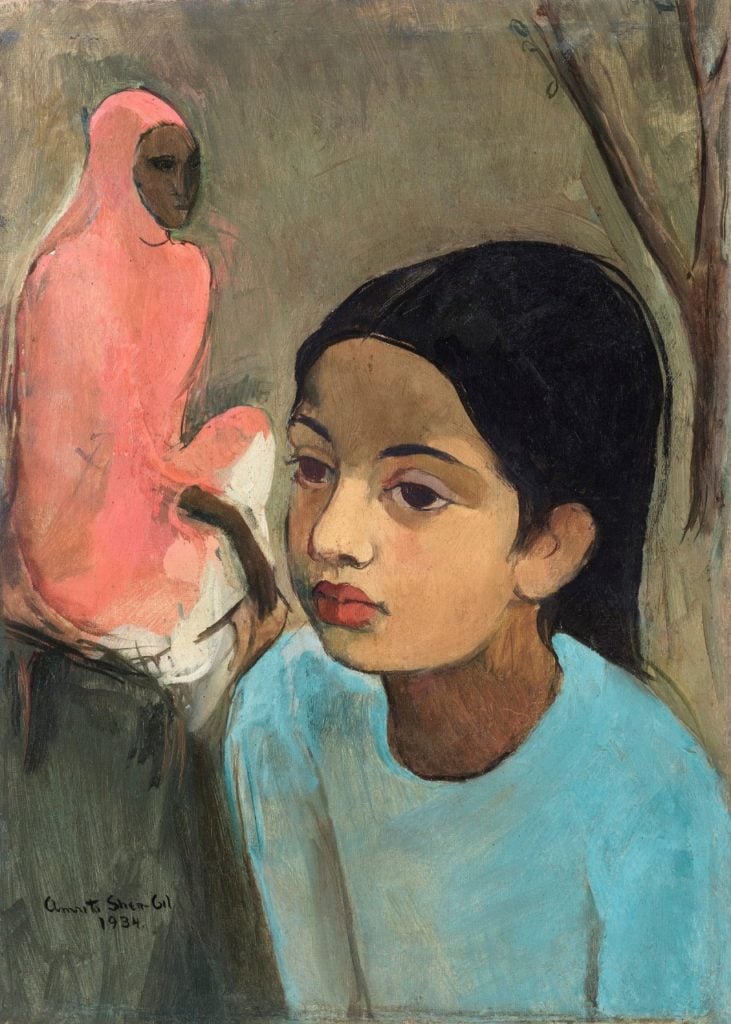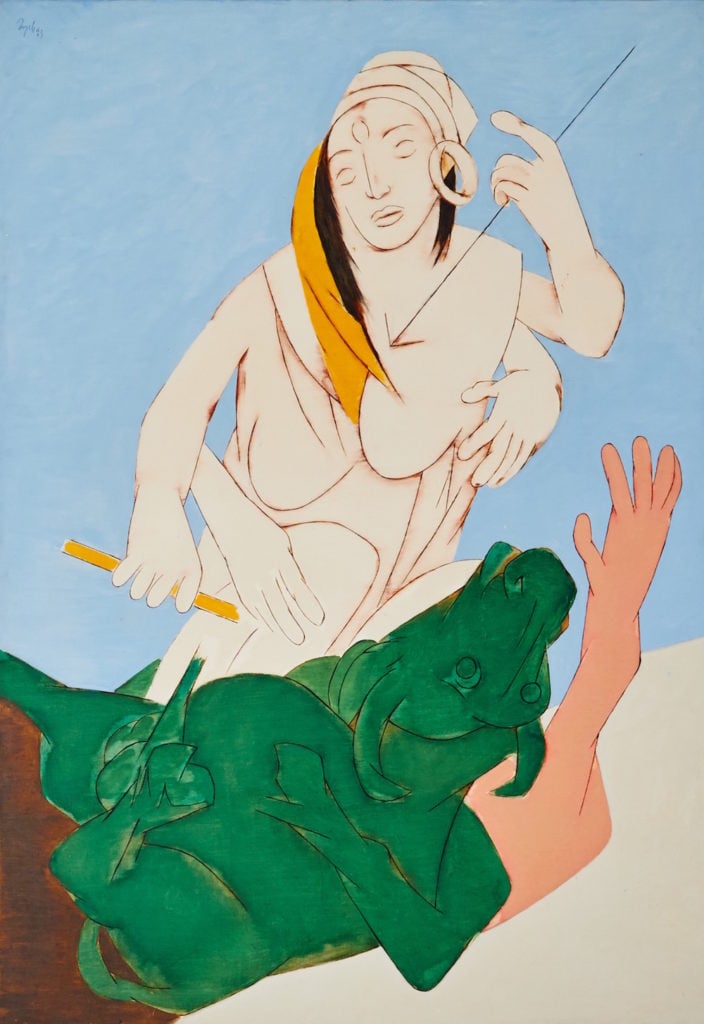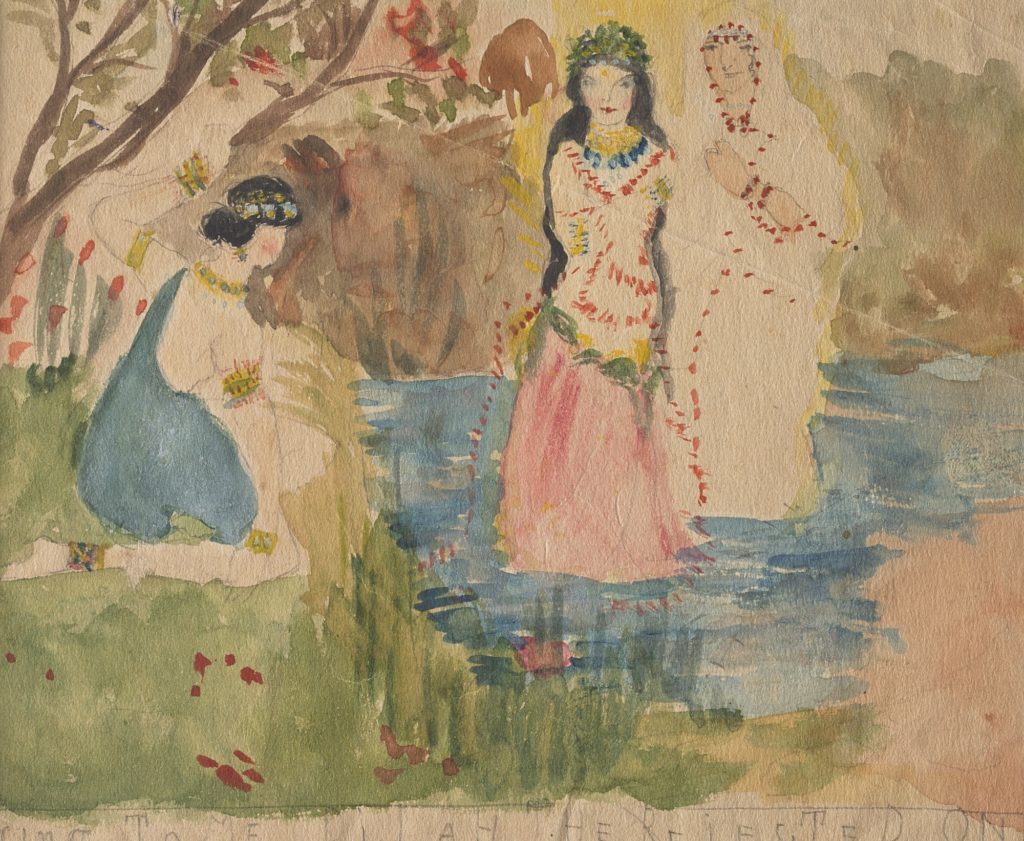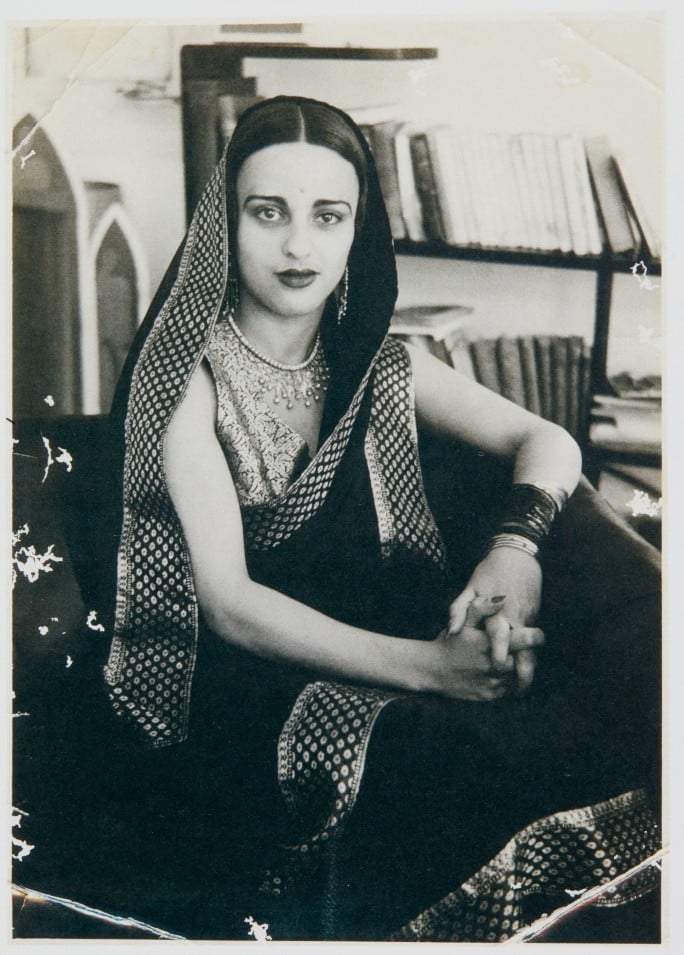Auctions
Amrita Sher-Gil, Known as ‘India’s Frida Kahlo,’ Is a Standout at Sotheby’s Inaugural Auction in Mumbai
The sale was held days after the auction house's managing director for India was placed on leave amid #metoo allegations.

The sale was held days after the auction house's managing director for India was placed on leave amid #metoo allegations.

Sarah Cascone

A rare work by Hungarian-Indian artist Amrita Sher-Gil (1913–1941), who was nicknamed the “Indian Frida Kahlo,” was among the top sellers at “Boundless: Mumbai,” the inaugural sale for Sotheby’s India, held at the end of last month in Mumbai. Her piece, The Little Girl in Blue (1934), went for 18,68,75,000 INR ($2.54 million), well above its presale high estimate. Previously, only two oil paintings by Sher-Gil had ever been auctioned in India, and only six worldwide.
The sales totals for the night were 56,08,00,000 INR ($7.9 million)—roughly matching expectations—with 11 lots failing to sell. The move into the Indian market is not without risk for Sotheby’s. The country’s economy and art market appears to be growing, but the same was true ahead of 2008’s recession, and optimism in the region is understandably mixed with caution after the once-booming market cratered a decade ago. Christie’s stopped its annual live auctions in Mumbai last year.
With three quarters of sold lots exceeding pre-sale estimates, Sotheby’s is counting the sale as an early win. “This is a milestone moment for Sotheby’s; the realization of a vision we have been planning for many years,” said Edward Gibbs, Sotheby’s chairman for the Middle East and India, in a statement. “The enthusiasm that we have seen for the sale and for our supporting exhibitions in Delhi and Mumbai stands us in very good stead for the future.”
There were just two lots exceeding the million-dollar mark: Little Girl and Tyeb Mehta’s Durga Mahisasura Mardini (1983). Predicted as the top lot of the evening when the sale was announced in April, the canvas, which depicts two goddesses engaged in combat, sold for 20,48,75,000 INR ($2.9 million), near the low end of the pre-sale estimate.

Tyeb Mehta, Durga Mahisasura Mardini (1983). Courtesy Sotheby’s.
Little Girl, on the other hand, handily surpassed the expected 8,50,00,000–12,50,00,000 INR ($1.15 million–1.7 million), becoming the fourth-most expensive piece by the artist ever to come to market. According to the artnet Price Database, her record has stood at $2.9 million since the March 2015 sale of Untitled (Self Portrait) (1933) at Sotheby’s New York. A second work by the artist, an untitled 1923 watercolor, painted when Sher-Gil was just 10, also sold today for 52,50,000 INR ($75,000).
A pioneer of modern Indian art, Sher-Gil was known for her depictions of Indian women quietly living ordinary lives. The New York Times published an obituary for Sher-Gil in June as part of its ongoing “Overlooked” series recognizing the lives and achievements of remarkable women. Born in Hungary, she studied art in Paris and died at just 28, possibly due to complications from an unsuccessful abortion performed by her husband, Victor Egan.

Amrita Sher-Gil, Untitled (1923). Courtesy of Sotheby’s India.
“There exist few, if any comparisons in the history of art to Amrita Sher-Gil. The influence she wielded in her tragically short life was enormous,” said Yamini Mehta, international head of Indian and South Asian art at Sotheby’s, in a statement ahead of the sale. “With her avant-garde approach, not only in her technique and style, but in her presentation of female subjects, she shaped the future art of in India perhaps more than any other artist of the time.”
Ahead of today’s sale, Little Girl was declared a National Treasure, which means it cannot leave the country without a special export license from the Indian government. The canvas was made when Sher-Gil moved to India at 21 years old, and depicts her neighbor and cousin, an eight-year-old girl named Lalit “Babit” Kauer. It had not been seen in public since it was purchased by the art critic Charles Fabri in 1937 at the artist’s first solo show, at Faletti’s Hotel in Lahore, now part of Pakistan. In his review, Fabri, who may have later been Sher-Gil’s lover, called the exhibition a “veritable feast for the eyes.”

Amrita Sher-Gil (circa 1930s). Photo by Dalip Singh. Reproduced from V. Sundaram, Amrita Sher-Gil: A Portrait in Letters & Writings, Vol. 2, Tulika Books, New Delhi, 2010, p. 626, courtesy of Sotheby’s India.
He continued to champion the artist after her untimely death, writing that “it was the central task of her artistic career to build a perfect bridge between the artistic vision of the West and that of India”—a job for which she was uniquely suited, thanks to her mixed European and Indian heritage.
The Sotheby’s sale was a major breakthrough for the female artist, but it was undoubtedly overshadowed by turmoil at the auction house. Just ahead of the auction, Gaurav Bhatia, the managing director of Sotheby’s India, was put on indefinite leave following sexual harassment allegations. Bhatia is one of a growing number of men in the Indian art world who have been accused of misconduct the Instagram account Scene and Herd (@herdsceneand).

Gaurav Bhatia, managing director of Sotheby’s India, has been accused on sexual misconduct. Photo courtesy of Sotheby’s.
One of the anonymous accounts, which involved forcible kissing and touching, claimed that “it was common knowledge in the firm that Gaurav had a tendency to touch guys inappropriately.” (As of press time, neither Bhatia nor Sotheby’s had responded to artnet News’s request for comment. But in a statement provided to the Art Newspaper, Sotheby’s said it had launched a formal inquiry into the allegations and that Bhatia was cooperating.)
Bhatia, who has a background in luxury advertising, is not the first high-profile figure in the Indian art world to be brought low by the Scene and Herd account.
In October, Riyas Komu, co-founder and secretary of India’s Kochi-Muziris Biennale, temporarily stepped down from his post in response to allegations levied against him via the social media account. In November, the New India Express reported that the Kochi Biennale Foundation had formed a five-person Internal Complaints Committee to investigate complaints against the artist.